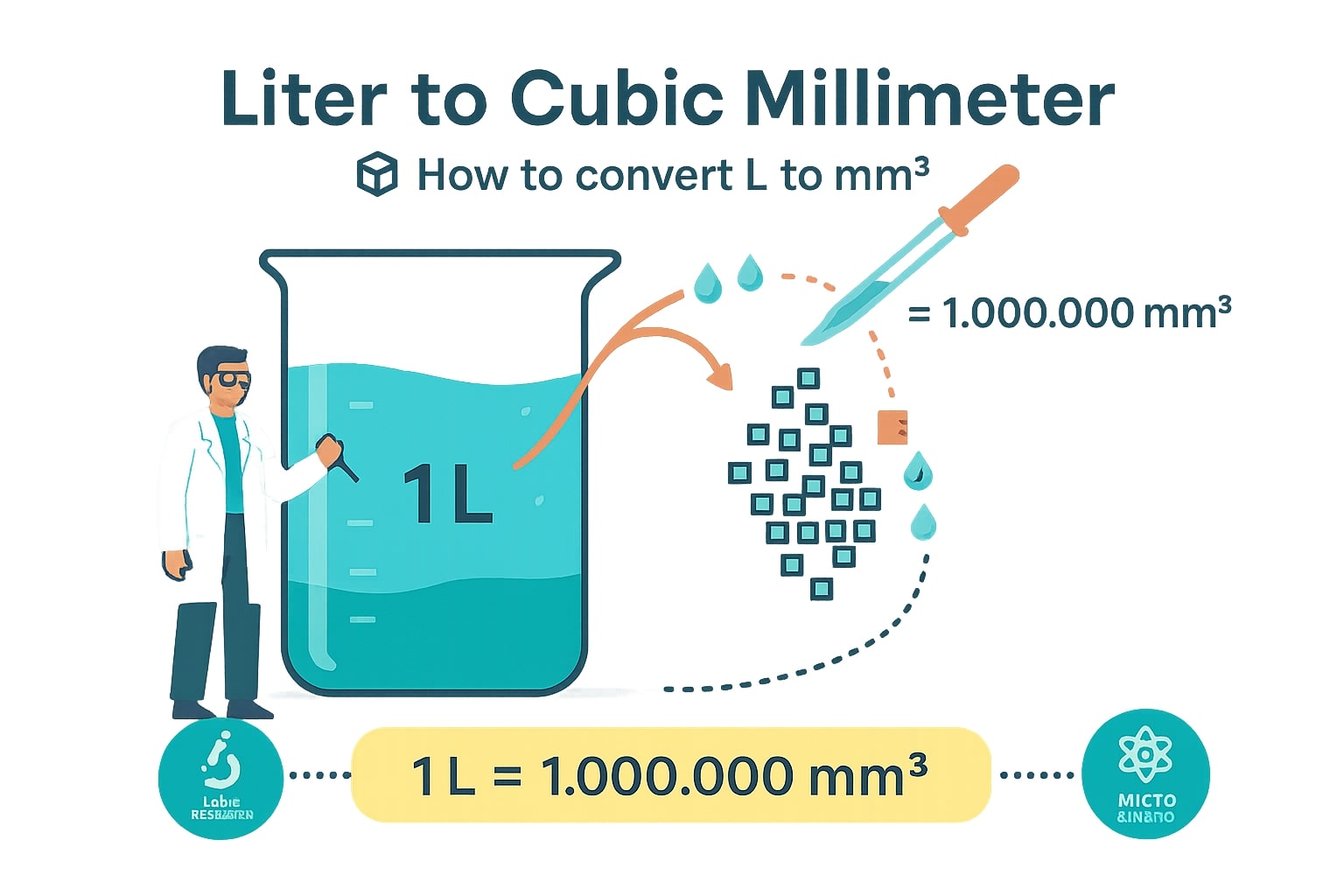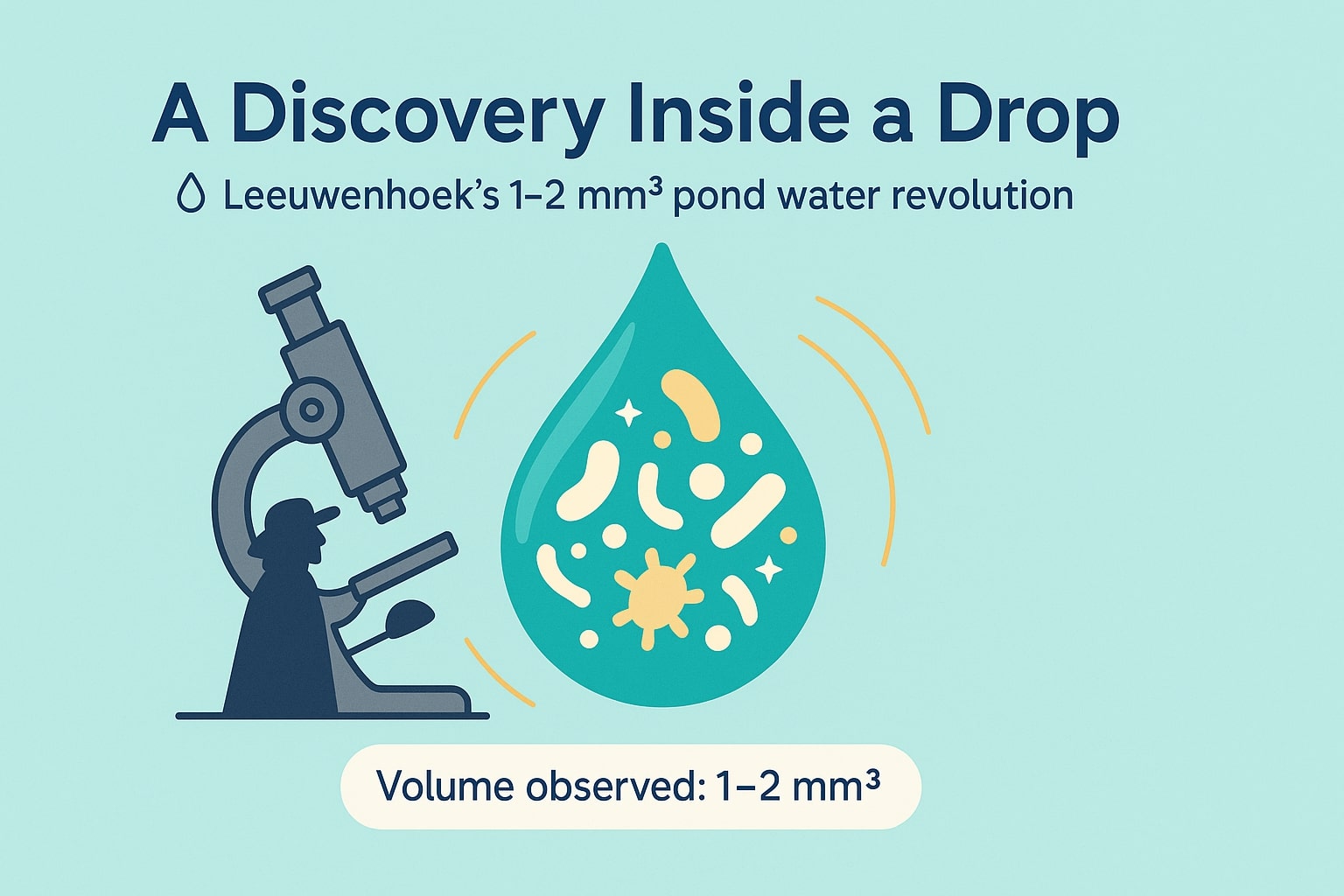liter to cubic millimeter – How to convert L to mm³
If you’re working with liquids or small-scale measurements in science, medicine, or engineering, you may need to convert liter to cubic millimeter. Despite both units being part of the metric system, they represent vastly different scales—one ideal for bottles, the other for microscopic drops.
This guide will walk you through the exact formula to convert L to mm³, offer real-life applications, and provide a few surprising facts about volume.
Need to explore other conversions? Use our handy Volume Converter or browse additional unit tools via our Conversion Tool. You might also be interested in our Liter to Cubic Centimeter and Milliliter to Cubic Millimeter tools if you're navigating volume conversions in the metric world.
What Is a Liter?
The liter (L) is one of the most commonly used metric units for measuring liquid volume. It's widely used around the globe in everyday contexts—from water bottles to fuel tanks.
Some basic equivalences:
-
1 L = 1,000 milliliters (mL)
-
1 L = 1,000,000 cubic millimeters (mm³)
-
1 L ≈ 33.814 US fluid ounces
The liter is not an SI base unit, but it’s accepted for use with the SI system and is deeply rooted in scientific, commercial, and household measurements.
What Is a Cubic Millimeter?
A cubic millimeter (mm³) is a very small unit of volume. It’s defined as the volume of a cube that measures 1 mm on each side. That means:
-
1 mm³ = 0.000001 liter
-
1 mm³ = 0.001 milliliters
Cubic millimeters are commonly used in:
-
Microfluidics
-
Engineering part tolerances
-
Medical dosing and syringes
-
Lab-based chemical reactions
Since the unit is so small, you typically encounter it when precise, fine-scale volume matters.

How to Convert Liter to Cubic Millimeter
The relationship between liter and cubic millimeter is direct and fixed:
1 liter = 1,000,000 cubic millimeters
Here’s the formula: mm³ = L × 1,000,000
Example: If you have 0.75 L of liquid 0.75 × 1,000,000 = 750,000 mm³
This kind of conversion is particularly useful when designing lab equipment or calibrating high-precision machines where microliters and millimeters are the measurement norm.
Did you know?
-
The ink inside a typical ballpoint pen is around 0.3 milliliters—or 300 mm³. That means three pens would carry less than 0.001 liters of ink total!
-
The average size of a raindrop is about 2 mm in diameter, which equals roughly 4.2 mm³ in volume. So, it would take over 238,000 raindrops to make just one liter of water!
-
In medical syringes used for insulin, dosage amounts are often measured in microliters or cubic millimeters. Just 1 L of liquid insulin equals 1 million cubic millimeters, enough for thousands of tiny doses.
-
Inkjet printers use only a few cubic millimeters of ink per page. A full liter of ink can theoretically print over 10,000 pages of high-density color text or images.
-
Many gemstones are measured by volume in mm³ before being cut. A 1-carat diamond is about 200 mm³—meaning a liter of pure diamonds could hold around 5,000 carats (though you’d need quite the budget!).
A Discovery Inside a Drop
In 1674, Dutch scientist Antonie van Leeuwenhoek peered through one of the earliest microscopes at a droplet of pond water—just a few cubic millimeters in volume. What he saw changed science forever: tiny “animalcules,” now known as bacteria.
Leeuwenhoek didn’t measure in liters or milliliters. But his discovery came from observing just a speck of liquid—no more than 1 or 2 mm³. That microscopic volume held an entire universe of life invisible to the naked eye.
Today, microbiologists still work with volumes at the cubic millimeter scale, building on the legacy of discoveries sparked by a single drop.

Conclusion
Converting liter to cubic millimeter is simple—but the difference in scale is enormous. With 1 L equaling 1,000,000 mm³, this conversion bridges the gap between kitchen quantities and laboratory precision.
Whether you're designing medical equipment, printing thousands of documents, or just curious about the scale of metric units, the formula stays the same:
mm³ = L × 1,000,000
Need to calculate even more? Use our powerful Volume Converter for instant results, or dive into the full catalog of tools with our Conversion Tool. And for related units, explore our Liter to Cubic Centimeter and Milliliter to Cubic Millimeter conversion tools—perfect for navigating even the smallest measurements with confidence.
Jetcalculator helps you think big—even when you're working small.

